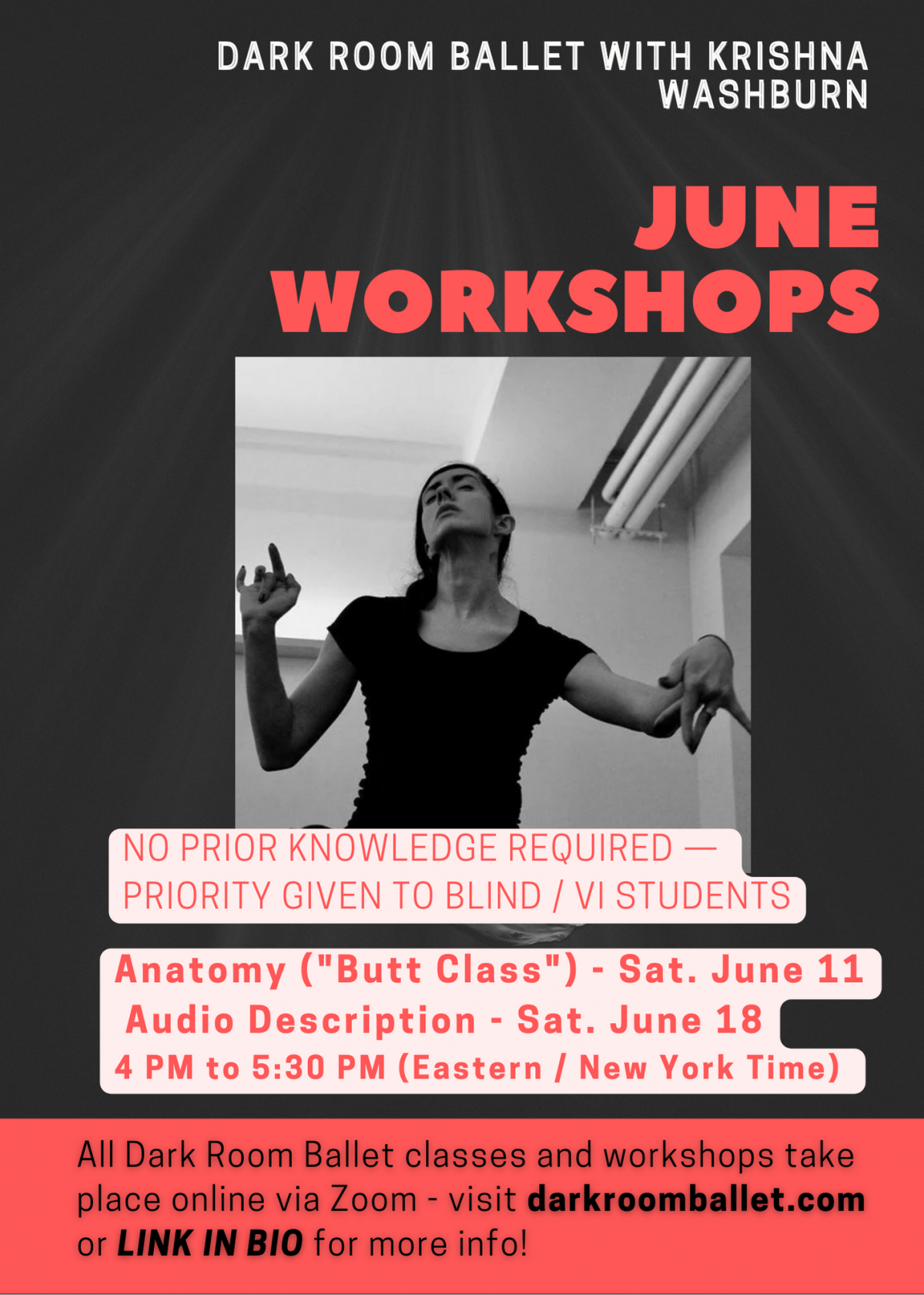Announcing two upcoming workshops open to all (priority given to blind and visually impaired students), no prior experience required.
Both workshops take place online via Zoom.
To register for one or both workshops, please write to info@darkroomballet.com as soon as possible to complete the intake process.
Saturday, June 11, 2022
4:00 PM to 5:30 PM (Eastern Time)
No Diagram Anatomy for Dancers in the Dark Room Presents Anatomy in Detail: The Gluteus Complex (Butt Class)
(link to Movement Research class listing)
The first in a series of three highly detailed workshops analyzing specific anatomical areas in detail. In this workshop, we will use movement and conversation to not only cultivate scientific knowledge related to the gluteus complex (the butt!), but also initiate a higher degree of body awareness and neurological learning in this area. Evolutionary history and the marvels of human variation will also be addressed in this workshop. No prior knowledge of human anatomy, dance, or self-audio description are required to participate, but all students will come away with deep anatomical knowledge, reduced movement anxiety, and tools to start learning how to talk about movement in a visceral way. Yes, we’ll be laughing, too.
Part One: Superficial muscles
Part Two: Intermedial muscles
Part Three: Deep muscles
Part Four: Bone
Part Five: Nerves and patterns of motor neuron response
Saturday, June 18, 2022
4:00 PM to 5:30 PM (Eastern Time)
Voices from the Dark Room: The Multitude of Audio Descriptions and When to Touch Them
(link to Movement Research class listing)
This self-audio description workshop gives students the framework for thinking of audio description as not a singular process with a singular best practice, but as multiple art forms with multiple purposes. Audio description has, for too long, been considered as an access tool that can be deployed at a moment’s notice with little forethought, but this sort of thinking creates environments of severe inequity. Classrooms, rehearsals, and performances where blind and visually impaired people are given inadequate connection to the art at their center are ableist places.
Part One: Audio Description in Technique Class
Part Two: Audio Description for Narrative Performance (story arc)
Part Three: Audio Description for Non-Linear Performance (emotional quality)
Part Four: Audio Description as Cooperative Creation and Collaboration (two voices)
Part Five: Audio Description for the Ensemble (a thousand voices)
